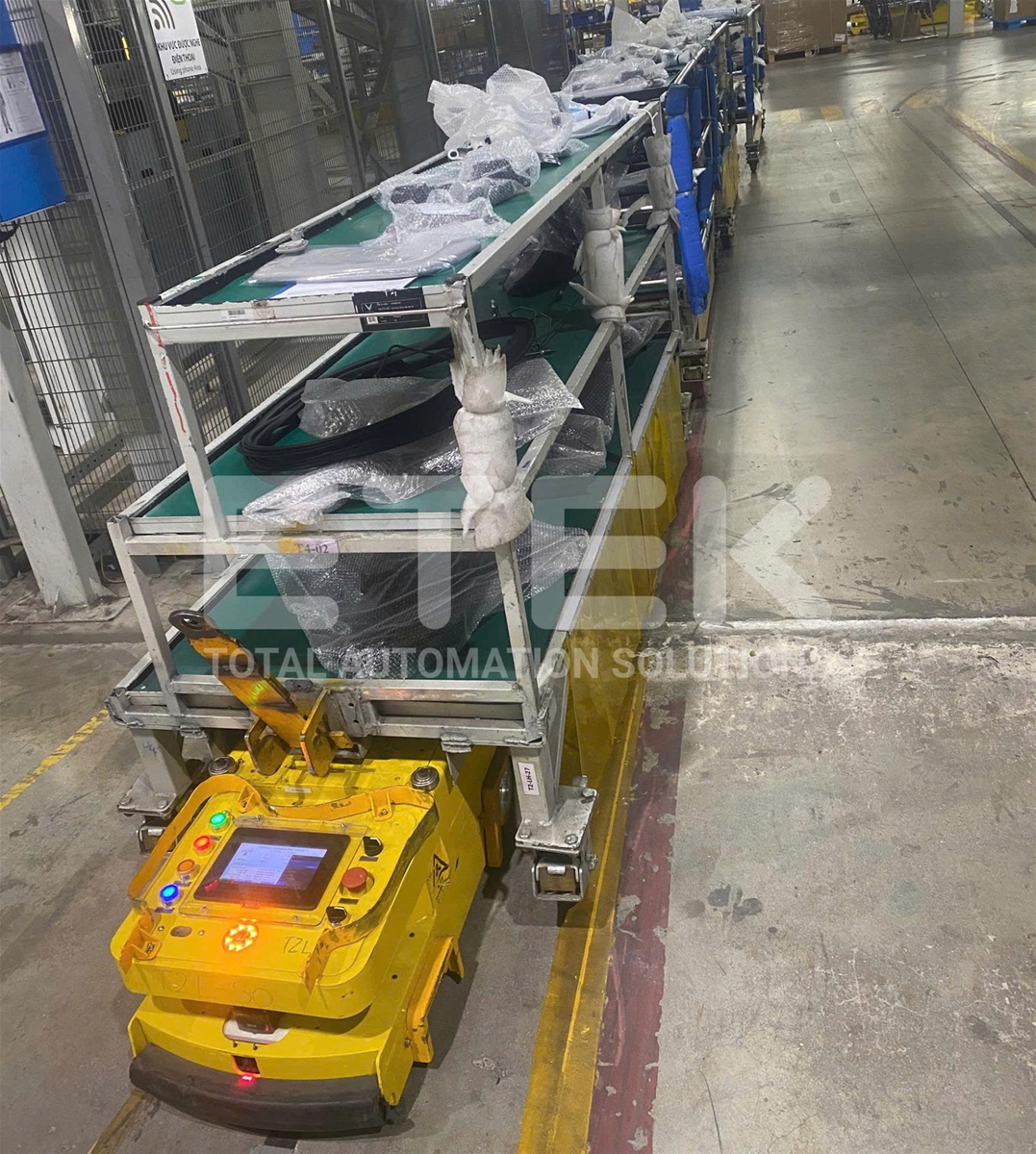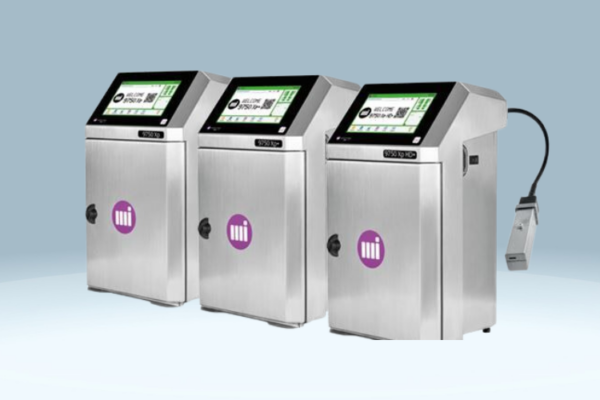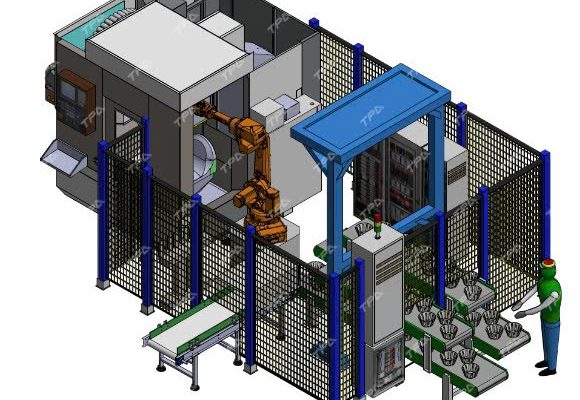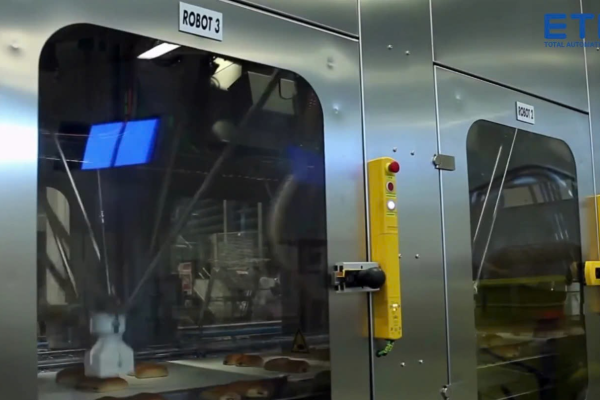In the journey of digital transformation and building smart factories, many automobile manufacturing and assembly enterprises in Vietnam have begun to invest heavily in automation technologies. One of the important steps is to apply the AGV (Automated Guided Vehicle) system to replace the traditional method of transporting materials by human labor and mechanical tractors.
The deployment of hundreds of AGVs at a large-scale automobile manufacturing and assembly plant in Vietnam is a clear demonstration of this trend. The project was carried out by ETEK – a pioneer in the field of automation solutions , with the goal of not only improving operational efficiency, but also helping customers gradually approach the smart factory model according to international standards.

Before the AGV system was deployed, all the transportation of components, materials, and finished products in the factory was done by humans – through handcarts or tractors. This method has many problems:
Modern AGVs incorporate a variety of navigation technologies, depending on the requirements and complexity of the environment:
In automobile assembly plants, AGVs often take on tasks such as:
Thanks to its precise, continuous and safe operation, AGVs help maintain a steady flow of materials , limiting bottlenecks and delays in the internal supply chain.

One of the outstanding applications of AGV self-propelled vehicles is integration with smart warehouse systems :
AGVs serve as the “backbone” of smart warehouse transportation operations, contributing to the construction of a modern, flexible and scalable logistics system.
See more about ETEK’s projects HERE

Continuous Inkjet (CIJ) printers are non-contact printing technology widely used in modern industrial production lines due to their high precision and fast speeds. These printers are ideal for printing codes…

Our Stamping Solution provides an efficient, high-speed method for producing stamped components from metal and plastic materials. Using automated stamping machines, robots, sensors, vision systems, conveyors, etc., to meet the…

In the era of smart manufacturing, metal polishing automation is no longer a trend but has become a core solution to help factories improve product quality, optimize costs and increase…

What is automation in the consumer goods industry? The food and beverage industry is a sector that produces items such as candy, bottled beverages, etc. In modern society, this industry…